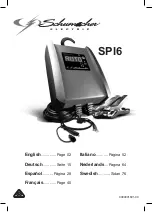
Information on noise or unusual driving charac-
teristics
While driving, pay attention to vibrations, noises
and unusual driving characteristics, e.g. pulling to
one side. This may indicate damage to the wheels
or tires. If you suspect that a tire is defective,
reduce your speed. Stop the vehicle as soon as
possible to check if wheels and tires have been
damaged or are no longer functioning properly.
Hidden tire damage could also be causing the
unusual driving characteristics. If no signs of dam-
age can be detected, have the tires and wheels
checked at a qualified specialist workshop.
Notes on regularly inspecting wheels and tires
&
WARNING Risk of injury through damaged
tires
Damaged tires can cause tire pressure loss.
#
Check the tires regularly for signs of
damage and replace any damaged tires
immediately.
Check the wheels and tires of your vehicle for
damage regularly, i.e. at least every two weeks, as
well as after driving off-road or on rough roads.
Damaged wheels can cause a loss of tire pressure.
Look out for the following types of damage, for
example:
R
cuts in the tires
R
punctures in the tires
R
tears in the tires
R
bulges on tires
R
deformation or severe corrosion on wheels
&
WARNING Risk of hydroplaning due to
insufficient tire tread
Insufficient tire tread will result in reduced tire
grip.
#
Thus, you should regularly check the
tread depth and the condition of the
tread across the entire width of all tires.
Minimum tread depth for:
R
Summer tires:
â
in (3 mm)
R
M+S tires:
ã
in (4 mm)
#
For safety reasons, replace the tires
before the legally prescribed limit for the
minimum tread depth is reached.
Conduct the following checks regularly on all
wheels, at least once a month or as required, e.g.
before a long journey or when driving off-road:
R
check the tire pressure (
/
page 244)
R
check the valve caps
Valves must be protected from moisture and
dirt with valve caps specifically approved by
Mercedes-Benz for your vehicle.
R
visually inspect the tread depth and the tire
contact surface across the whole tire width
The minimum tread depth for summer use is
â
in (3 mm) and for winter use
ã
in (4 mm).
Markings
1
show in which places the bar indica-
tors (arrow) are integrated into the tire tread. They
are visible as soon as the tread depth is approx-
imately
á
in (1.6 mm).
Information on driving with summer tires
At temperatures below 50 °F (10 °C) summer tires
lose elasticity and therefore traction and braking
power. Change the tires on your vehicle to M+S
tires. Using summer tires at very cold tempera-
tures could cause tears to form, thereby damaging
the tires permanently. Mercedes-Benz cannot
accept responsibility for this type of damage.
Always observe the maximum permissible speed
specified for the summer tires you have installed
(
/
page 255).
Once you have installed the summer tires:
R
Check the tire pressure (
/
page 244)
R
Restart the tire pressure monitor
(
/
page 250)
At temperatures below 50 °F (10 °C) use winter
tires or all-season tires that are marked with M+S.
Only winter tires bearing the
i
snowflake sym-
bol in addition to the M+S marking provide the
best possible grip in wintry road conditions.
242 Wheels and tires
















































